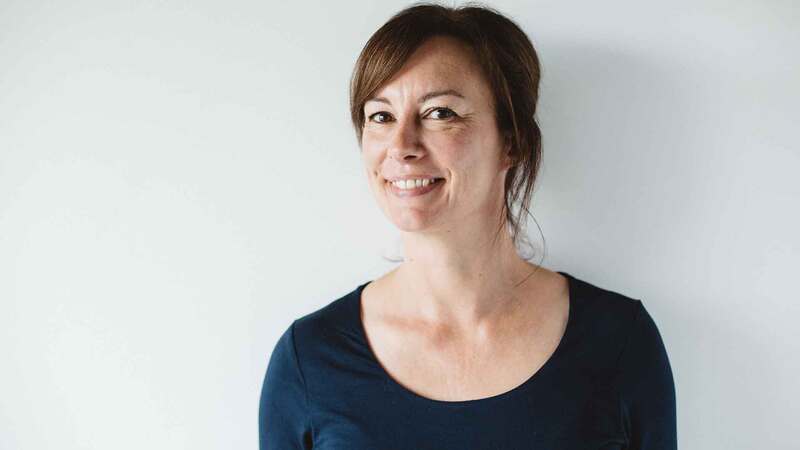You are viewing your 1 free article this month. Login to read more articles.
Mark My Words
Digitisation has not entirely killed off paper in the book publishing process. So knowledge of the arcane symbols of the proof-reader's trade is still a vital skill. Humphrey Evans reports
E-mail exchange of files and electronic text manipulation inhouse have superseded the one-time world of typesetters pulling inky galley proofs off metal type and the basic task of checking copy setting. But all other stages still exist, and proof-correction marks link together that community of people in book publishing who know that paper lives. This arcane symbolic language, codified by the British Standards Institution, provides communication for those who choose to monitor progress through paper rather than rely solely on computers.
At Sidgwick&Jackson, for instance, senior editor Ingrid Connell says that, although they usually copy edit on screen, page proofs will come back on paper to be read by authors and freelance proof-readers, and revised page proofs will stay as paper until everything is correct. There is a reason: "With computers, if you get a glitch somewhere, if you get something slightly odd going wrong, you can't tell where it is if you don't have a paper trail."
Penguin Press has a similar approach. Managing editor Mark Handsley says that the great majority of the press' books will be proofed on paper at some point. "Proof-reading on paper is much easier than reading on screen. Most of our proof-reading is done out of house by freelance proof-readers. If we can send off a packet of proofs we don't have to worry about what computer system they might have."
Once you have paper and you start making corrections, the value of having standard marks soon becomes clear. "We use them all the time," says Suzi Beddoes, an editor at Oxford University Press handling international primary school books. "We send stuff to typesetters and printers all over the world. They all have to understand, whatever language they speak. It seems to work."
An honourable tradition
Proof-reading, like printing itself, has always had this international aspect. The first manual of proof-reading appeared in Leipzig in 1608, although the first reference to the activity of checking proofs appears in a preface written by William Caxton in the 15th century.
That manual, Orthotypographia, was compiled by Jerome Hornschurch, who was supporting himself through his medical studies by working as a corrector of the press. He sets out the necessary qualities: "The corrector must be no ordinary man; he must have a quick eye for detail; he must be sober." He shares his despondencies: "Every day I had to struggle not so much with printers' errors, as with incorrect and revolting copy." He gives detailed advice, such as checking that similar letters, say e and c, have not been interchanged. And, in two sample pages, he shows the actual marks he has been using.
Here, already, is a caret, an inverted v, to show an insertion, an underlining for italic, a squiggle for deletion, a slash to show the end of a correction where one letter replaces another, a full stop picked out with a ring around it. Mr Hornschurch would not seem out of place handling proofs at any typesetters today.
Move to London in 1683 where unlicensed master printer Joseph Moxon, in his Mechanick Exercises, records these same symbols, adding in a few extra such as square brackets pointing left and right to show where text should be moved, nearer to or further from the margins. Move on to Paris in 1825 where Henri Fournier, in Traité de la Typographie, has three underlinings to indicate capital letters.
National variations
Yet even as these basic symbols seemed to be spreading and building into a system, national differences were creeping in. The squiggles people made to delete something, for instance, differed quite noticeably from country to country. This did not matter too much, but what did cause problems was the use of elements of written language in the correction process.
English speaking proof-readers would happily write "ital" in the margin to change something to italic. You can still see this system at work in newspaper offices, where proofs never go out of the building and journalists have picked up what they do by osmosis from a previous generation. Unfortunately, "ital" doesn't mean very much if proofs find their way back to a Czech typesetter or a Malaysian printer, as happens in the book trade.
Internationalisation pushed British publishers into seeking something that could potentially be understood by anyone, anywhere, and this, in turn, led the British Standards Institution (BSI) to produce, in 1976, a revised and extended set of marks, contained in BS5261, that replaced words with symbols.
This is the system that uses a symbol in the margin such as a sloping E on its back to show you want italic, and a similar symbol slashed through to take you back to roman. If you have been taught proof-reading, this is the set of marks you will have learned.
Publisher Kogan Page is typical. Copy editing is done on disk but proofs come in on paper. Group publishing manager Louise Cameron says KP absolutely relies on the standard symbols. "We use them inhouse to communicate with each other because they're so much quicker. We set a test to prospective freelance proof-readers to make sure they know how to use them in the proper place and intelligently. The typesetters recognise them--if they didn't, I wouldn't be using them."
Swift and sure communication provides the justification for making certain that people use the proper symbols. Lesley Ward, who is involved with training proof-readers through the Publishing Training Centre, the London College of Printing and the Society for Editors and Proof-readers, points out that the system itself is extremely logical and that a body of good practice has developed on how to use it.
"I meet people all over the place who aren't using the system," she says. "They waste a lot of time and cause confusion with printers because they end up filling the margin with explanations. The principle of symbols is sound--you don't have to explain things in words."
But Lesley Ward is a more significant figure than just a teacher of proof-reading. She has been Britain's representative on the bodies trying to bring about international agreement on a system of marks, flying off to meetings in places such as Berlin and Baltimore and putting forward suggestions for exactly which symbols should be adopted in a full international set.
BS5261, with more than 60 marks, was developed with the specific aim that it could form the basis for an international system. Unfortunately, the actual international standard issued in 1983, ISO 5776, listed only 16. When Belgium suggested that this could be adopted as the European norm, other European nations demurred. It is simply not extensive enough to do the job. Although this leaves an international limbo, printers round the world seem willing to respond in practice to the marks currently being used.
Perhaps the one thing everyone can agree on is how easily a lackadaisical approach to proofs can run away with money. Back to Louise Cameron: "Correction costs are high. In 15 years in publishing, I've never not been in a position where we haven't been worried about changes at proof stage."
Self-discipline by all concerned seems to be the only antidote, although the colour coding allowed for in the system does distinguish between typesetters' mistakes (red), editorial slips (black or blue) and changes requested by the author (some other agreed colour). That way at least the typesetter can identify who should pay for what. n
Humphrey Evans is a freelance sub-editor.














